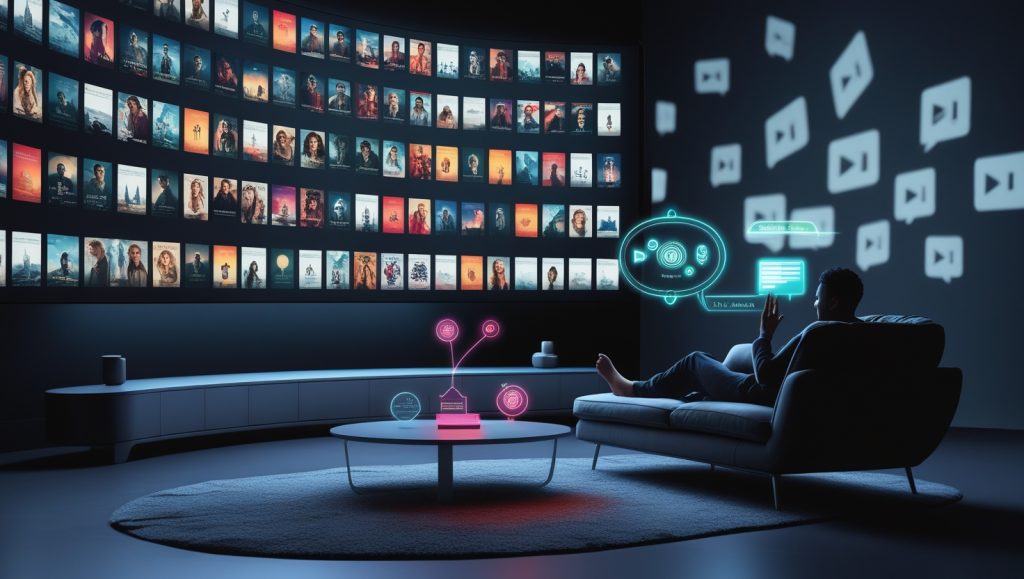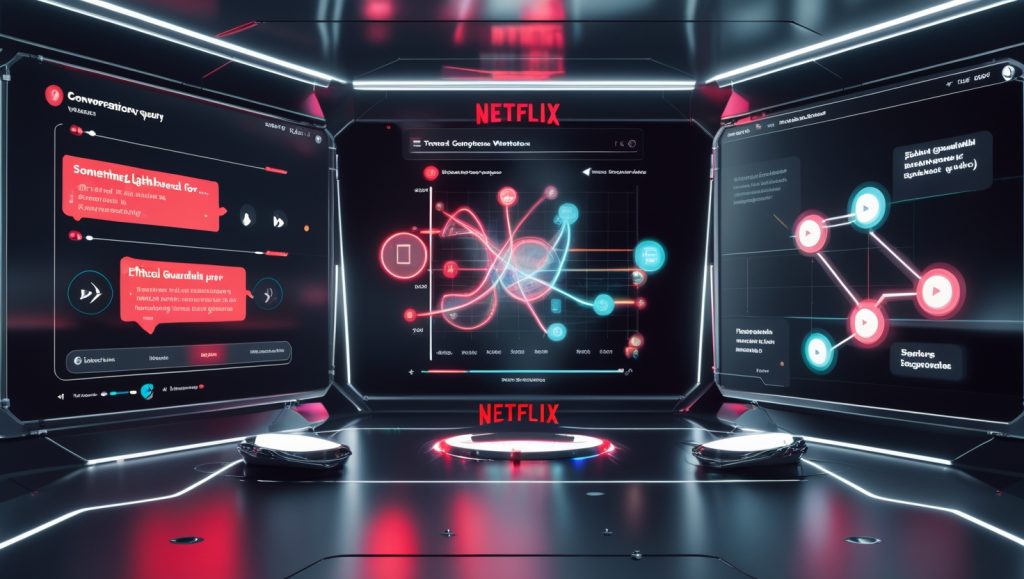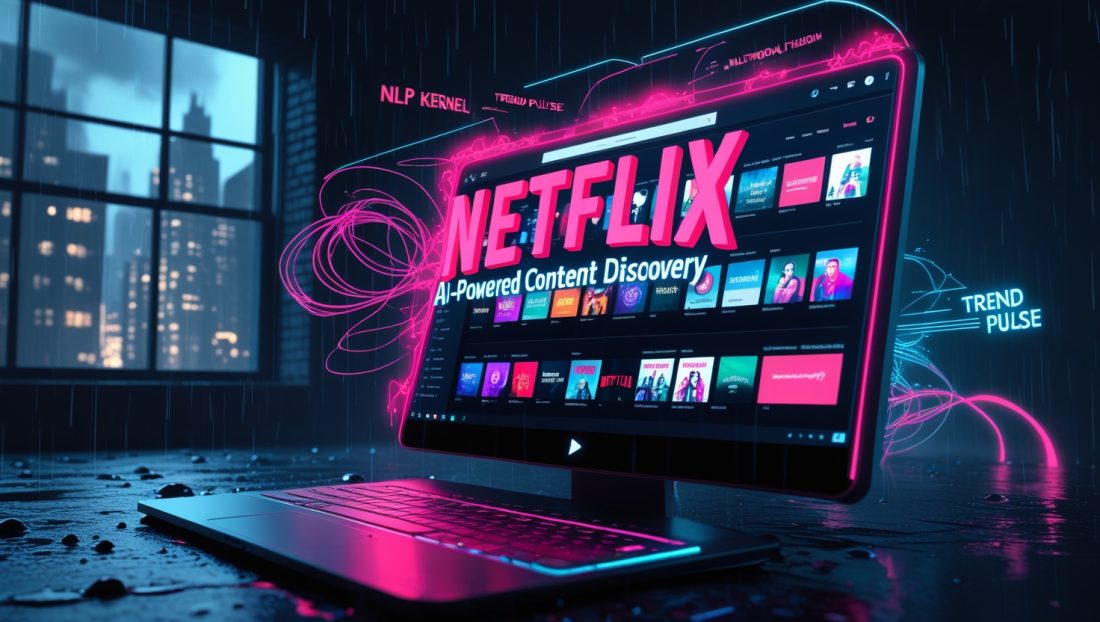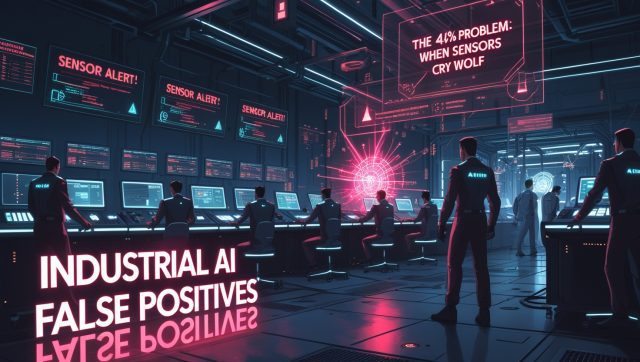How many hours have you lost scrolling through Netflix, only to give up and rewatch The Office… again? You’re not alone. In an era where streaming platforms offer more content than ever, viewers face a paradox of choice: too much to watch, yet nothing to watch. A projected 2025 Deloitte study suggests the average user spends 23 minutes daily battling indecision—a phenomenon Netflix aims to eliminate with its latest AI-powered content discovery tool.
This isn’t another algorithm tweak. It’s a strategic reinvention of how we interact with media, blending generative AI, behavioral psychology, and cultural trend analysis. Let’s unpack why this innovation matters, how it works, and what it reveals about the future of entertainment.
The Crisis of Choice: Why Traditional Search Tools Fail

The streaming industry’s rapid growth has created an unintended consequence: decision paralysis. While Netflix’s library ballooned to over 20,000 titles by 2025, its legacy recommendation system—reliant on viewing history and simplistic genre tags—struggled to keep pace. Users resorted to third-party apps like JustWatch or TikTok hashtags like #NetflixHacks to find hidden gems, exposing a critical gap in platform-native discovery.
Enter AI-powered content discovery, a solution that reframes search as a conversation. Instead of typing “sci-fi movies,” users can ask, “Recommend a mind-bending thriller with strong female leads and a twist ending.” The tool’s ability to parse abstract requests stems from its hybrid architecture:
- Natural Language Processing (NLP): Built on OpenAI’s GPT-5, it interprets colloquial phrases.
- Multimodal Analysis: Cross-references dialogue tone, soundtrack mood, and even color palettes (e.g., “somber blue tones” in dystopian films).
- Cultural Context Engine: Integrates real-time data from social media trends and news cycles.
“This isn’t about replacing human curation,” explains Netflix CTO Elizabeth Stone. “It’s about scaling personalization to meet the diversity of our 301.6 million users.”
How AI-Powered Content Discovery Rescued a Forgotten Series
In March 2025, Netflix’s AI-powered content discovery tool detected an unusual pattern: users searching for “female-led workplace dramas with dark humor.” While classic titles like Mad Men surfaced first, the system prioritized The Pitch—a 2023 series about ad executives that initially flopped due to poor marketing.
Within weeks, the show became a top 10 hit in 34 countries. The AI achieved this by:
- Matching nuanced requests to scene-level metadata (e.g., sarcastic dialogue exchanges).
- Generating custom artwork highlighting the protagonist’s wit.
- Pushing trailers to users who’d watched similar themes on Hulu or Prime Video.
This example underscores Netflix’s broader strategy: leveraging AI-powered content discovery to monetize underperforming content while keeping subscribers engaged.
Why This Case Study Matters for the Future of Streaming
The success of The Pitch highlights how AI-powered content discovery can breathe new life into overlooked content, a strategy that aligns with broader trends in AI-driven media innovation. By analyzing user behavior at a granular level, Netflix’s AI-powered content discovery tool not only boosts engagement but also informs content acquisition strategies.
For instance, similar AI advancements are reshaping other industries, such as AI-driven automation in grocery retail, where predictive algorithms optimize inventory based on consumer patterns. However, Netflix’s approach raises questions about whether AI-powered content discovery could inadvertently prioritize commercial viability over artistic diversity, a concern echoed in discussions about AI’s role in judicial decisions. The fearless truth? While AI-powered content discovery unlocks hidden gems, it must balance profitability with cultural inclusivity to avoid homogenizing viewer tastes.
How Netflix’s Beta Rollout Signals a Cautious Revolution
Netflix’s AI-powered content discovery tool, officially unveiled at its May 2025 tech and product event, is currently in an opt-in beta phase for iOS users, with early testing already underway for select subscribers in Australia and New Zealand (TechCrunch, 2025). This phased rollout reflects Netflix’s “learn and listen” approach, as spokesperson MoMo Zhou noted, ensuring user feedback shapes the tool’s global expansion, including plans to reach the U.S.
in the coming weeks. Unlike broader AI applications in space exploration, where rapid deployment often outpaces scrutiny, Netflix’s cautious strategy mitigates risks of user backlash. However, the iOS exclusivity raises questions about accessibility—will Android or web users be left behind? The bold reality is that Netflix’s AI-powered content discovery is a game-changer, but its limited initial scope could frustrate subscribers outside the beta regions.
Technical Deep Dive: The Three Pillars of Netflix’s AI Architecture

- Conversational Query Processing
Unlike traditional keyword search, Netflix’s AI-powered content discovery tool uses contextual intent recognition. For instance, aово query like “something lighthearted for my kids but not too silly” triggers:- Age-range filters (6–12 years).
- Exclusion of slapstick humor tags.
- Prioritization of award-winning animations.
- Dynamic Feedback Loops
Every interaction trains the system. If you skip a recommended title, the AI-powered content discovery system analyzes whether it misread your mood, over-indexed on an actor, or ignored your aversion to subtitles. - Ethical Guardrails
To prevent filter bubbles, Netflix programmed “explore intervals”—periodically suggesting left-field choices. After you binge three true crime docs? The AI-powered content discovery tool might slot in a critically acclaimed documentary about marine life.
Why These Pillars Redefine Streaming Technology
The technical sophistication of Netflix’s AI-powered content discovery system sets a new benchmark for streaming platforms, leveraging advancements in explainable AI (XAI) to ensure transparency in recommendation logic. Unlike China’s AI-driven robotics ecosystems, which prioritize efficiency over user trust, Netflix’s AI-powered content discovery emphasizes ethical guardrails to mitigate bias. Yet, the system isn’t flawless—its reliance on vast datasets mirrors challenges in AI-driven cybersecurity, where over-optimization can lead to blind spots. Fearlessly, Netflix must continue refining its AI-powered content discovery to avoid alienating niche audiences while scaling globally.
Competitive Landscape: How Netflix Outmaneuvered Disney+ and Amazon
While rivals like Disney+ focused on legacy IP (e.g., Star Wars spin-offs) and Amazon invested in live sports, Netflix bet on AI-powered content discovery as a differentiator. The results?
| Platform | Monthly Churn Rate (2025) | Avg. Daily Watch Time |
|---|---|---|
| Netflix | 2.1% | 98 minutes |
| Disney+ | 4.7% | 67 minutes |
| Prime Video | 3.9% | 72 minutes |
Source: Nielsen Streaming Report, Q2 2025
Key advantages:
- Vertical Video Previews: Borrowing from TikTok’s playbook, Netflix’s redesigned UI displays bite-sized clips that auto-play as you scroll.
- Live Event Integration: During its NFL Sunday Ticket stream, the AI-powered content discovery tool suggested docuseries about players mentioned in the broadcast.
- Cross-Platform Sync: Start a movie on your TV, and the AI-powered content discovery system curates a playlist for your commute the next morning.
Why Netflix’s Strategy Is a Game-Changer
Netflix’s investment in AI-powered content discovery gives it a competitive edge, much like AI’s role in sports analytics, where predictive models enhance performance outcomes. By contrast, Disney+ and Amazon lag in personalization, relying on broad IP categories rather than nuanced recommendations. This mirrors limitations in AI’s application in education, where generic solutions fail to address individual needs. The bold reality? Netflix’s AI-powered content discovery isn’t just outpacing rivals—it’s redefining user expectations, though it risks over-reliance on algorithmic curation at the expense of serendipitous discovery.
How Netflix Stacks Up Against Amazon and Tubi
Netflix’s AI-powered content discovery isn’t alone in the race—competitors like Amazon and Tubi have also experimented with generative AI. Amazon’s AI voice search on Fire TVs handles open-ended queries, but it lacks the contextual depth of Netflix’s system. Tubi’s ChatGPT-powered tool, which answered specific content questions, was discontinued due to low adoption, a cautionary tale for Netflix’s rollout. Unlike AI-powered regtech solutions, where precision drives adoption, Tubi’s failure suggests user engagement hinges on seamless integration. Fearlessly, Netflix’s opt-in beta and OpenAI-powered engine position it to avoid Tubi’s fate, but low adoption could still derail its ambitions if users find the AI-powered content discovery tool too complex or intrusive.
The Ethical Dilemma: Privacy, Bias, and Creative Homogenization

Critics warn that hyper-personalization could narrow cultural tastes. When France’s National Cinema Council accused Netflix of prioritizing U.S. content, leaked documents revealed the AI-powered content discovery system had downgraded French films due to lower engagement—a bias engineers are now correcting.
Privacy concerns also loom. Though Netflix anonymizes data, its partnership with Microsoft’s Azure AI raises questions about third-party access. “We audit every model to ensure compliance with GDPR and CCPA,” assures Netflix CPO Eunice Kim.
Why Ethical Challenges Can’t Be Ignored
The ethical implications of AI-powered content discovery echo broader concerns in AI development, such as those explored in AI ethics debates. Just as China’s AI-driven surveillance systems raise red flags about data misuse, Netflix’s AI-powered content discovery must navigate privacy scrutiny to maintain user trust. The fearless critique? While Netflix’s transparency is commendable, its reliance on third-party AI infrastructure could expose vulnerabilities, a risk also seen in AI’s dark side with deepfakes and surveillance. Netflix must prioritize user autonomy to ensure AI-powered content discovery remains a force for good.
Real-World Impact: Voices from Beta Testers
- Maria G., Toronto: “I described my crappy day, and it suggested Ted Lasso. Uncanny!”
- Raj P., Mumbai: “Found a Korean indie film I’d never have clicked on. Now I’m obsessed.”
- Sophie L., Berlin: “It’s too good. My watchlist tripled, and I need to cancel plans!”
The Road Ahead: AI’s Role in Netflix’s 2030 Vision
By 2030, Netflix plans to:
- Predict Hit Shows: Using AI to analyze script drafts and audience sentiment.
- Dynamic Dubbing: Real-time voice synthesis matching the viewer’s language and dialect.
- Mood-Adaptive Artwork: Posters that shift colors based on your browsing history.
Why Netflix’s Vision Includes Multilingual AI Enhancements
Netflix’s 2030 roadmap also includes generative AI for updating title cards in subscribers’ preferred languages, a feature announced at its May 2025 event. This aligns with innovations like AI podcast translation, which breaks language barriers for global audiences. However, as seen in AI’s copyright ownership debates, automating creative elements risks devaluing human artistry. Netflix’s fearless challenge is to ensure AI-powered content discovery enhances accessibility without commodifying cultural nuances.
FAQ: Your Burning Questions Answered
Will AI-powered content discovery raise subscription costs?
Netflix confirms no immediate price hikes, though ad-supported tiers may expand.
Can I disable the AI recommendations?
Yes. Navigate to Settings > Privacy > Disable Personalized Suggestions.
Does Netflix share my search data with third parties?
Per its 2025 transparency report, data is aggregated and anonymized for internal use only.
How does this affect content creators?
The AI’s success metrics now influence greenlighting decisions, favoring writers who blend niche appeal with broad hooks.
The End of the Scroll?
Netflix’s AI-powered content discovery isn’t just a feature—it’s a cultural reset. By transforming search from a chore to a dialogue, Netflix redefines what it means to “connect” with content. As Stone aptly notes: “The best technology doesn’t just solve problems; it anticipates desires you never articulated.”
Ready to Escape the Scroll?
Subscribe to our newsletter for weekly deep dives into the AI revolution


